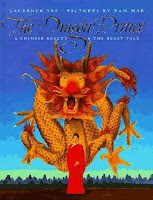Ken Sheldon, editor
If I Were a Kid in Ancient China
Cricket Books, 2006
Co-authored by contributors to children's magazines
Appleseeds, Calliope, and
DIG along with staff at Cricket Books,
If I Were a Kid in Ancient China is an eclectic mélange of short essays. I love the idea of the series, "If I Were a Kid in the Ancient World...," which includes volumes on Greece, Rome, and Egypt. I wish, however, that pieces in
Ancient China hewed more closely to that idea of examining another time-place through the lens of a child. The introductory essay, "Made in China," is snappy, intriguing, and accompanied by attractive pictures. The next three pieces, on everyday life, dress, and toys amplify the introduction. Other essays stray into areas that are not so ancient China (foot-binding, for example, was not practiced widely until the Song dynasty; and the various religions spread along the Silk Road have distinct timelines, some of which do not overlap with ancient time frame).
I found the fact-checking uneven, too. This volume is the first I have heard that connects the tiger design on children's costume to the visual form of the character for king, or ruler, 王
wang. The fifth Confucian virtue, knowledge, should be
zhi, written 智; and I wished that the Chinese equivalent for Confucius was rendered Kongzi (孔子), instead of the latinized Chinese Kong Fuzi. Some of the illustrations implicitly mislead. An illustrations accompanying "A Visit to Chang'an" shows the Han-dynasty
Mingtang 明堂, or Bright Hall, a site for state rituals. Without a caption, readers may easily think it represents Chang'an, the city. I don't know whether Chinese children really did collect ants for ant soup (p. 14), but I am reasonably certain that the stirrup was adopted by the Han Chinese from steppes peoples (p. 7).
I am glad to have appealing and accesible non-fiction books to introduce English readers of all backgrounds to Chinese history and culture. I hope that in time, greater care will be taken to improve the quality of such books from good to excellent.


























